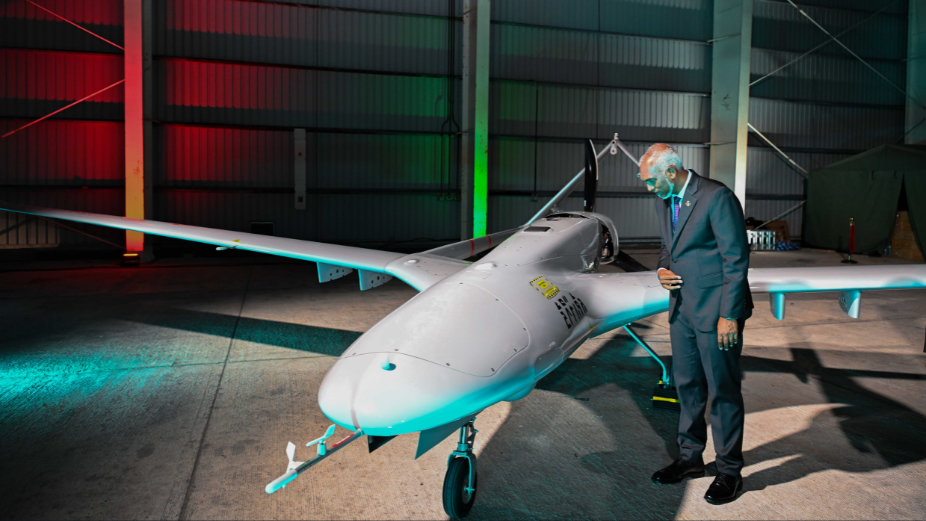
The Maldives’ Exclusive Economic Zone (EEZ), a vast swath of the Indian Ocean, is a region of both economic potential and security concerns. In a move to strengthen its surveillance capabilities, the Maldives National Defence Force (MNDF) has recently unveiled Unmanned Aerial Vehicles (UAVs), commonly known as drones. These are the Bayraktar TB2 drones intended for patrol and surveillance missions.
The Bayraktar TB2: A New Tool for EEZ Surveillance
Inaugurated at the MNDF Air Corps base in Noonu Maafaru, the Bayraktar TB2 drones have garnered international attention for their combat-proven capability in conflict zones like Ukraine. Known for their reliability and relative affordability, these drones are in high demand, currently employed by the militaries of 31 countries. Their deployment in the Maldives signals a significant enhancement in surveillance technology.
The Promise of Surveillance
The integration of drones into the Maldivian security apparatus aims to address several key concerns. Protecting the Maldives’ tuna fisheries, vital to the national economy, is a primary goal. Drones equipped with advanced sensors and cameras can aid in identifying and intercepting vessels engaged in illegal, unreported, and unregulated (IUU) fishing. Additionally, these drones can provide valuable real-time monitoring of maritime traffic, enhancing the ability to detect and respond to threats like piracy and smuggling. Furthermore, environmental monitoring is another potential application, as well as using drones to track ocean currents and pollution levels and support marine conservation efforts.
The Price of Vigilance
While the advantages of drone surveillance are compelling, it’s essential to consider the costs and potential drawbacks. Acquiring, operating, and maintaining sophisticated drone systems can place a financial burden on the budget. The use of surveillance technologies, particularly those with advanced sensor capabilities, raises questions about privacy and the potential for overreach by authorities. Striking a balance between security needs and civil liberties will require careful consideration. Moreover, substantial funds invested in surveillance could be diverted towards other pressing needs, such as healthcare, education, or infrastructure development.
Balancing Economic and Geopolitical Concerns
The debate surrounding EEZ surveillance extends beyond immediate implications. It’s crucial to consider the potential impact on foreign investment and shipping. Perceptions of excessive surveillance, especially if coupled with a lack of transparency, could deter investors and shipping companies. Conversely, the Maldives’ enhanced surveillance capabilities could contribute to broader Indian Ocean security initiatives. Collaborating with neighbouring countries could strengthen regional security and address shared threats.
Finding the Right Balance
The Maldivian government faces the ongoing challenge of maximizing the benefits of EEZ surveillance while minimizing potential drawbacks. Targeted investment prioritizing proven and cost-effective technologies, like the Bayraktar TB2, will be critical. Ensuring transparency and accountability in surveillance activities will be essential to protect civil liberties and maintain public trust. Finally, collaborating with regional and international partners will optimize surveillance capabilities and intelligence sharing, addressing threats that often transcend borders.
The effective surveillance of the Maldives’ EEZ, bolstered by new drone technologies, is not just a matter of security but a cornerstone of its economic future. The ability to protect its marine resources, ensure maritime safety, and foster a conducive environment for investment will be crucial in navigating the opportunities and challenges of the 21st century.













